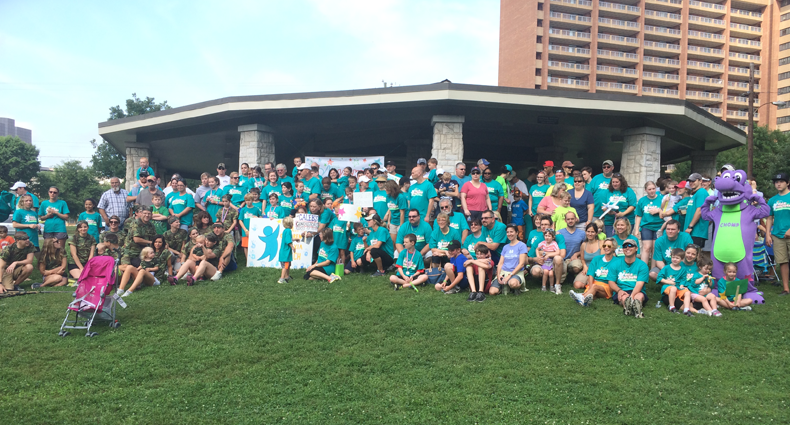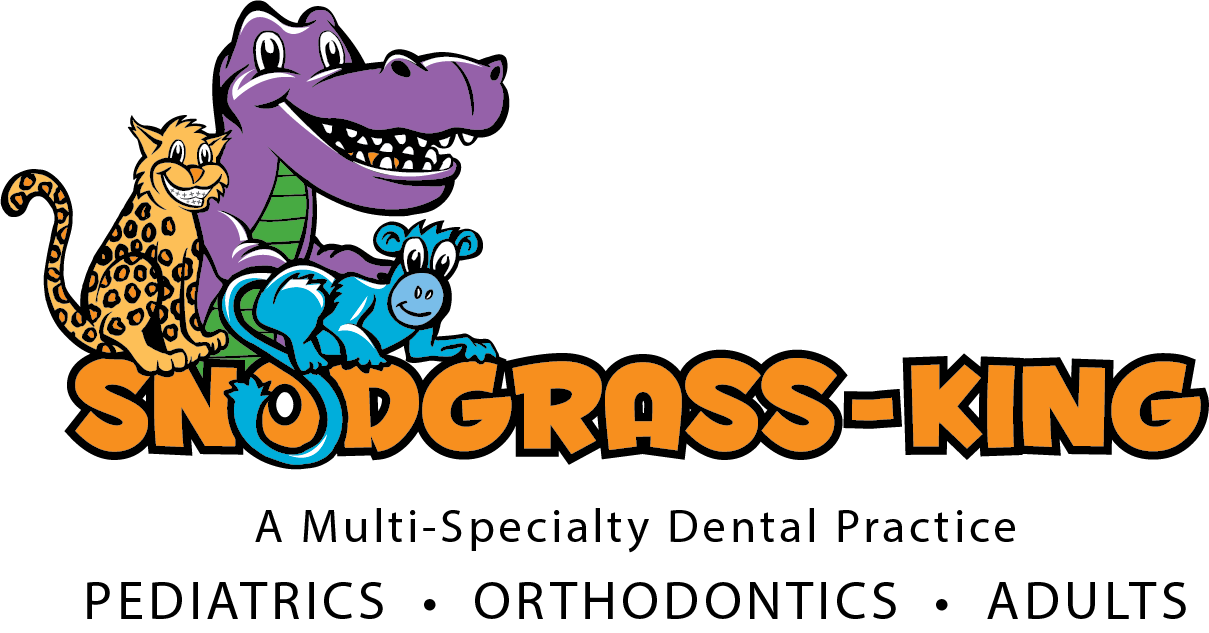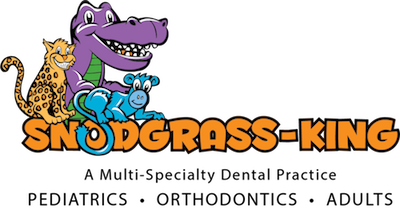Walk for Children with Apraxia of Speech

Chomp had an amazing time this past weekend at the Walk for Children with Apraxia of Speech, where we helped raise over $8400 in support of CASANA’s programs & research!
The walk funds raised will be used to create new educational multimedia apraxia resources, fund and support apraxia research, bring apraxia researchers together to coordinate efforts, and provide iPads and cases to children with Apraxia in need.
As pediatric dentists, supporting CASANA and raising awareness for children with Apraxia is a passion of ours here at Snodgrass-King. Read on for more information on Apraxia of speech and CASANA’S mission to help children with this rare motor-speech disorder.
CASANA’S Mission
The Childhood Apraxia of Speech Association of North America is a registered 501c(3) public charity whose mission is to strengthen the support systems in the lives of children with Apraxia so that each child is afforded their best opportunity to develop to their full potential.
This is done through raising awareness; providing support to families and professionals; conducting educational workshops; webinars; and conferences; distributing high-quality information; and supporting and funding research into effective treatment for Apraxia.
What Is Childhood Apraxia of Speech
Childhood apraxia of speech (CAS) is a movement-based motor-speech disorder where children know what they want to say but are unable to form the words. There is no way to prevent CAS, as it is a neurological condition tied to brain development.
You might also hear healthcare providers call CAS developmental verbal dyspraxia and developmental Apraxia of speech. These are the same conditions; the difference is their severity. Apraxia means that you completely lose the ability to do something. In contrast, dyspraxia means that you partially lose the ability to do something with accuracy.
CAS is rare, only affecting around 1-2 out of every 1,000 children in the U.S. and is often mistaken for other speech sound disorders and even autism because symptoms can overlap.
For example, autism has some of the same symptoms as CAS, such as difficulty making eye contact when trying to talk and sensory issues.
Apraxia is not a form of autism; however, studies show that childhood apraxia of speech is common among children with autism spectrum disorder (ASD). One study found that 64% of children initially diagnosed with ASD also have Apraxia, 36.8% of the children diagnosed with Apraxia of speech also had autism, and 23.3% of the children received a dual diagnosis.
Children with CAS do not outgrow the condition because there is no cure. It can take a lot of work for children with CAS to learn to say sounds and words better, but a speech-language pathologist can help improve communication skills.
What Causes Childhood Apraxia of Speech?
Scientists are still trying to determine what causes CAS and research is ongoing to pinpoint the direct cause of CAS. However, there are several theories.
Some people with CAS have a genetic condition or variation. Others might have a neurodevelopmental disorder where they have interruptions in specific nerve pathways in their brains. Brain injury and damage to parts of the brain that control how your muscles move are also said to cause Apraxia of speech.
Apraxia of speech is most commonly seen in children, which then, depending on the success of childhood treatment, can extend into adulthood. However, adults that never had Apraxia as a child can also develop Apraxia. This is called acquired Apraxia of speech (AOS).
AOS is caused by any damage or condition that compromises the structures and pathways of the brain responsible for planning and programming motor movements for speech. Causes most often include things such as – stroke, traumatic brain injury (TBI), tumors, or surgical trauma.
Signs and Symptoms of Childhood Apraxia of Speech
There are a few things you can watch out for in infancy. However, red flags that your child might have CAS are usually not noticed until 18 months and 2 years. As children produce more speech, usually between ages 2 and 4, characteristics that likely indicate CAS become more noticeable.
Here are a few of the most common signs and symptoms of CAS:
- Late development of the child’s first words and sounds.
- Loss of previously produced words.
- Use a limited number of consonant and vowel sounds when speaking.
- Have more difficulty saying longer words and sentences than shorter ones.
- Saying the same word differently each time a child tries to produce it.
- Difficulty producing longer, more complex words and phrases.
- Difficulty with the timing, rhythm and flow of speech.
- Multiple and/or unusual sound errors.
- Mix up the order of sounds in words.
- Vowel sound errors.
- Excessive movements of the mouth or failed attempts to position the mouth for sound.
- Errors in the order of sound production in words
- Have difficulty imitating sounds and words.
Children who have CAS may also experience:
- Anger and frustration because they can’t get their message across.
- Trouble with social interaction and connection with others.
- Difficulties with reading and spelling.
- Sucking, chewing, and swallowing problems
- Difficulty performing movements with their tongue and lips when asked.
- Persistent clumsiness and poor coordination.
Not all children with Apraxia of speech progress at the same speed, and some might respond quicker to treatment than others. The most important thing you can do for your child if they are diagnosed with CAS is to start treatment early and provide support in learning and practicing speech-language skills at home to make the treatment more effective.
Testing and Diagnosis of Childhood Apraxia of Speech
An accurate diagnosis of CAS is made through a comprehensive speech and language evaluation by a speech-language pathologist (SLP). The SLP will typically observe the child’s speech during conversation and structured tasks, such as repeating words or sentences, to assess the child’s intelligibility, speech sound production, and prosody (i.e., the rhythm and melody of speech).
Formal assessment tools may also be used, such as the Goldman-Fristoe Test of Articulation or the Diagnostic Evaluation of Articulation and Phonology (DEAP). Sometimes, a speech-language pathologist may also use imaging techniques such as magnetic resonance imaging (MRI) or ultrasound to assess the child’s speech-motor control.
A thorough assessment of a child’s abilities is needed to develop therapy goals based on his/her individual needs.
Is There A Cure for Childhood Apraxia of Speech?
Most children outgrow a speech delay or impediment, but this is not the case for Apraxia. There is no cure for CAS, but most children with CAS will experience significant improvement, if not complete recovery, with the correct treatment.
Treatment for CAS might include:
- Advanced speech therapy with a speech-language pathologist to address the movement patterns required to produce speech appropriately and help to improve communication.
- Learning alternative means of communication like sign language or using electronic communication devices.
- Repetitive language exercises.
These treatments can be extensive; some children visit their speech-language pathologist three to five times per week for many years, especially if treatment does not begin early in childhood.
CAS is present from birth, and children often will not progress without treatment. If your child is diagnosed with CAS, it is essential that you start treatment as soon as possible. It can take a lot of work, but the child’s speech can improve
Final Thoughts
Here at Snodgrass-King, we will continue to support charities such as CASANA to do our part in raising important funds and awareness for Apraxia of speech.
With commitment from professionals, researchers and families, we are confident that children with Apraxia of speech can significantly improve their speech and communication skills.
To learn more about CAS, CASANA, and how to donate or get involved, visit the Apraxia Kids website.

